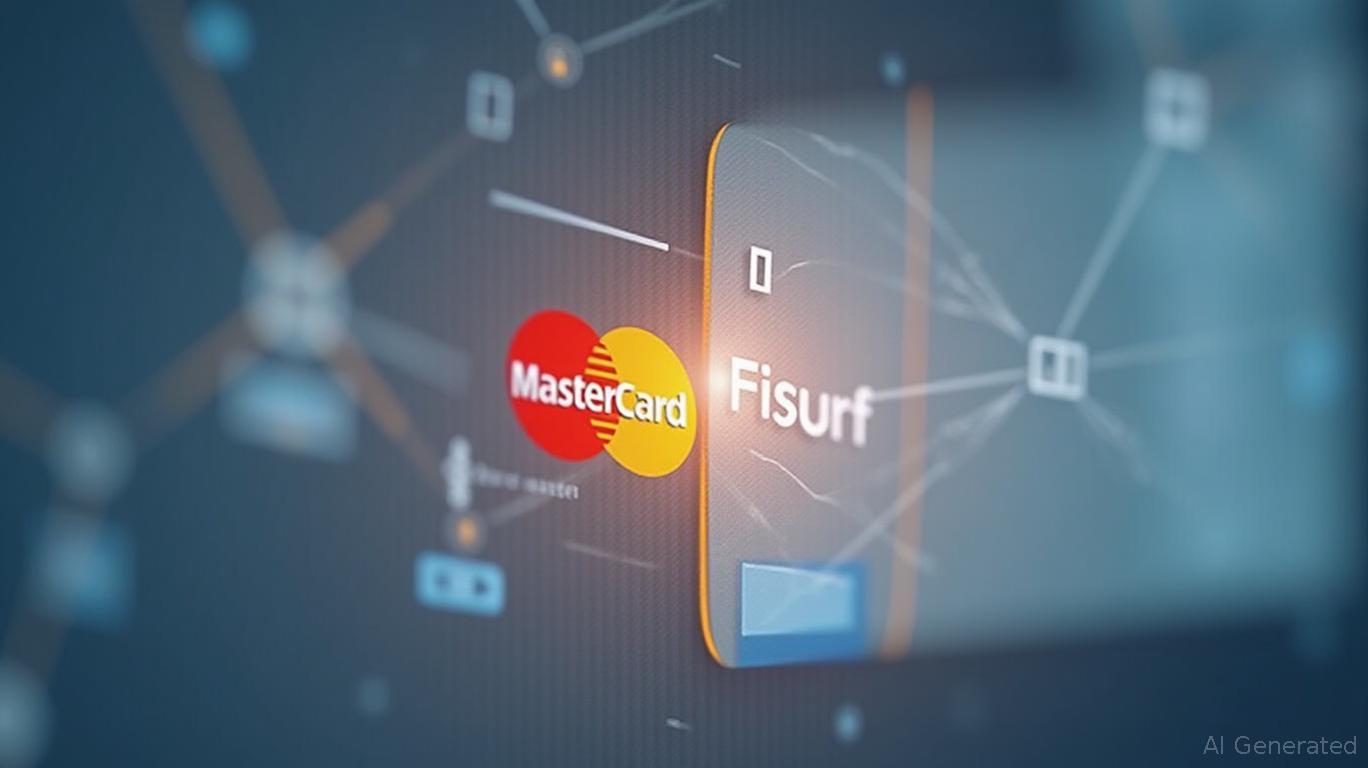Mastercard's FIUSD Integration: A Strategic Play to Stay Relevant in the Stablecoin Era
The financial services landscape is undergoing a seismic shift, driven by the rise of blockchain-based digital assets and stablecoins. Traditional institutions like
and are now scrambling to adapt, lest they cede market share to crypto-native platforms. Their recent partnership to integrate Fiserv's FIUSD stablecoin into Mastercard's network is a bold move to modernize legacy systems and position themselves at the forefront of the digital asset revolution.A Partnership to Bridge Old and New

Announced in June 2025, the collaboration merges Mastercard's 150-million-merchant network with Fiserv's 10,000 financial institution clients, creating a bridge between traditional finance and the $150 billion stablecoin market. The FIUSD stablecoin—pegged 1:1 to the U.S. dollar—will now be usable for everyday transactions, merchant settlements, and cross-border payments. Key features include:
- Seamless On/Off-Ramping: Consumers can instantly convert fiat to FIUSD and vice versa, eliminating friction between digital and traditional money.
- Merchant Settlements in FIUSD: Businesses can settle transactions in the stablecoin, reducing currency conversion costs and operational complexity.
- Stablecoin-Powered Cards: Mastercard's One Credential feature lets users toggle between debit, credit, or FIUSD payments dynamically at checkout.
This integration is not just about technology—it's a strategic response to a growing threat. Crypto platforms like PayPal, Circle, and even JPMorgan's JPMD are encroaching on traditional payment corridors. Mastercard and Fiserv are countering with a hybrid model that retains the trust of legacy systems while adopting the speed and efficiency of blockchain.
Why Traditional Institutions Need Stablecoins
The shift underscores three critical imperatives for financial giants:
- Competing with Disruptors: Crypto firms offer lower fees, faster settlements, and global reach—advantages traditional banks and payment networks must match. By integrating FIUSD, Mastercard aims to “tokenize” its existing infrastructure, offering merchants and consumers the best of both worlds.
- Regulatory Certainty: The U.S. Senate's pending GENIUS Act, which regulates stablecoins, creates a framework for trusted adoption. Fiserv's FIUSD, built on the Solana blockchain and backed by Circle/Paxos compliance expertise, positions it as a “safe” alternative to unregulated tokens.
- Market Expansion: Stablecoins are not just for crypto enthusiasts. Cross-border remittances, B2B payments, and gig economy payouts are ripe for disruption. Mastercard's Move platform, already used by services like MoneyGram, can now leverage FIUSD to slash costs and processing times.
Investment Implications: Risks and Rewards
For investors, the partnership highlights Mastercard's agility in a shifting landscape. The stock has underperformed peers like PayPal in recent years, but FIUSD could reverse this trend by unlocking new revenue streams:
- Merchant Fees: FIUSD transactions could generate interchange fees comparable to traditional cards.
- Interoperability Fees: Mastercard's Multi-Token Network (MTN) could charge for connecting banks, merchants, and stablecoin networks.
- Data Monetization: Transaction data from 90 billion annual FIUSD transactions could fuel analytics services.
However, risks remain:
- Regulatory Headwinds: The GENIUS Act could impose costly compliance burdens or limit stablecoin use.
- Market Saturation: Competitors like USDG (the Global Dollar Network) and PayPal's PYUSD are also vying for dominance.
- Consumer Adoption: Stablecoins must prove their utility beyond tech-savvy users to achieve mass appeal.
The Bottom Line
Mastercard's FIUSD integration is a smart defensive move to retain relevance, but its success hinges on execution. Investors should monitor adoption metrics—such as merchant sign-ups and transaction volumes—alongside regulatory developments. For now, the stock appears undervalued relative to its potential in the $1.5 trillion cross-border payments market.
Recommendation:
Consider a cautious overweight in Mastercard for its leadership in integrating stablecoins, but pair it with a short position on pure-play crypto firms to hedge against regulatory risks. The FIUSD rollout by year-end 2025 will be a critical inflection point—success here could make Mastercard the 21st-century equivalent of Visa, but failure could cement its position as a fading legacy brand.
In an era where digital assets are no longer niche, traditional institutions must evolve or perish. Mastercard's bet on FIUSD is a high-stakes gamble—one that could redefine the future of payments.

Comments
No comments yet